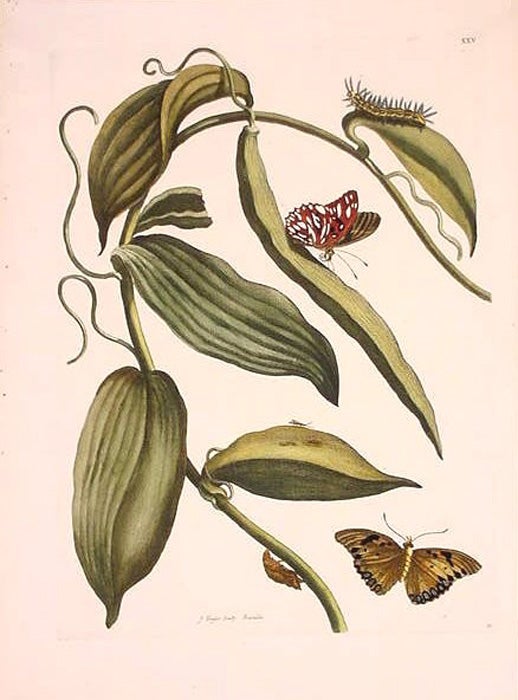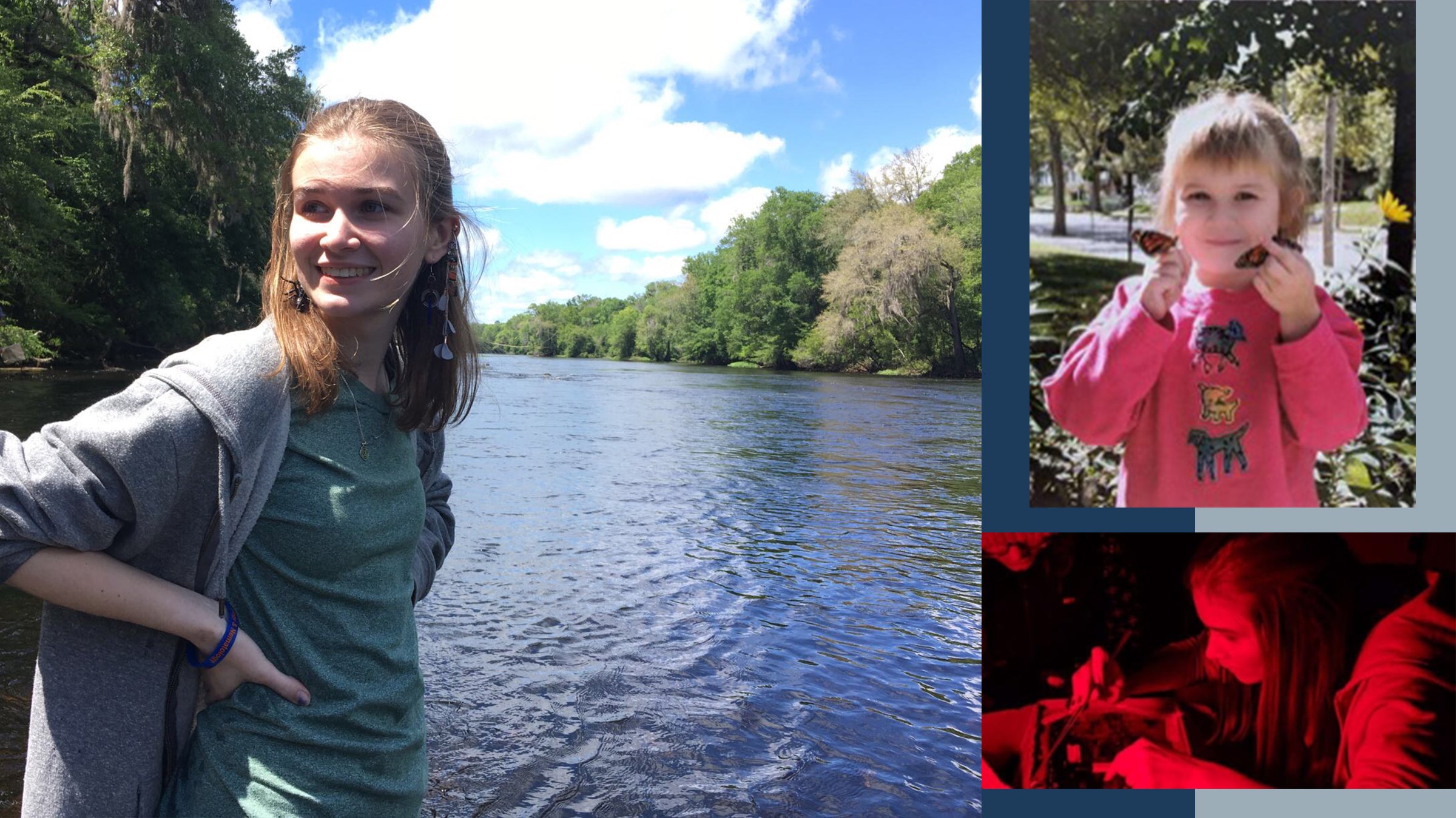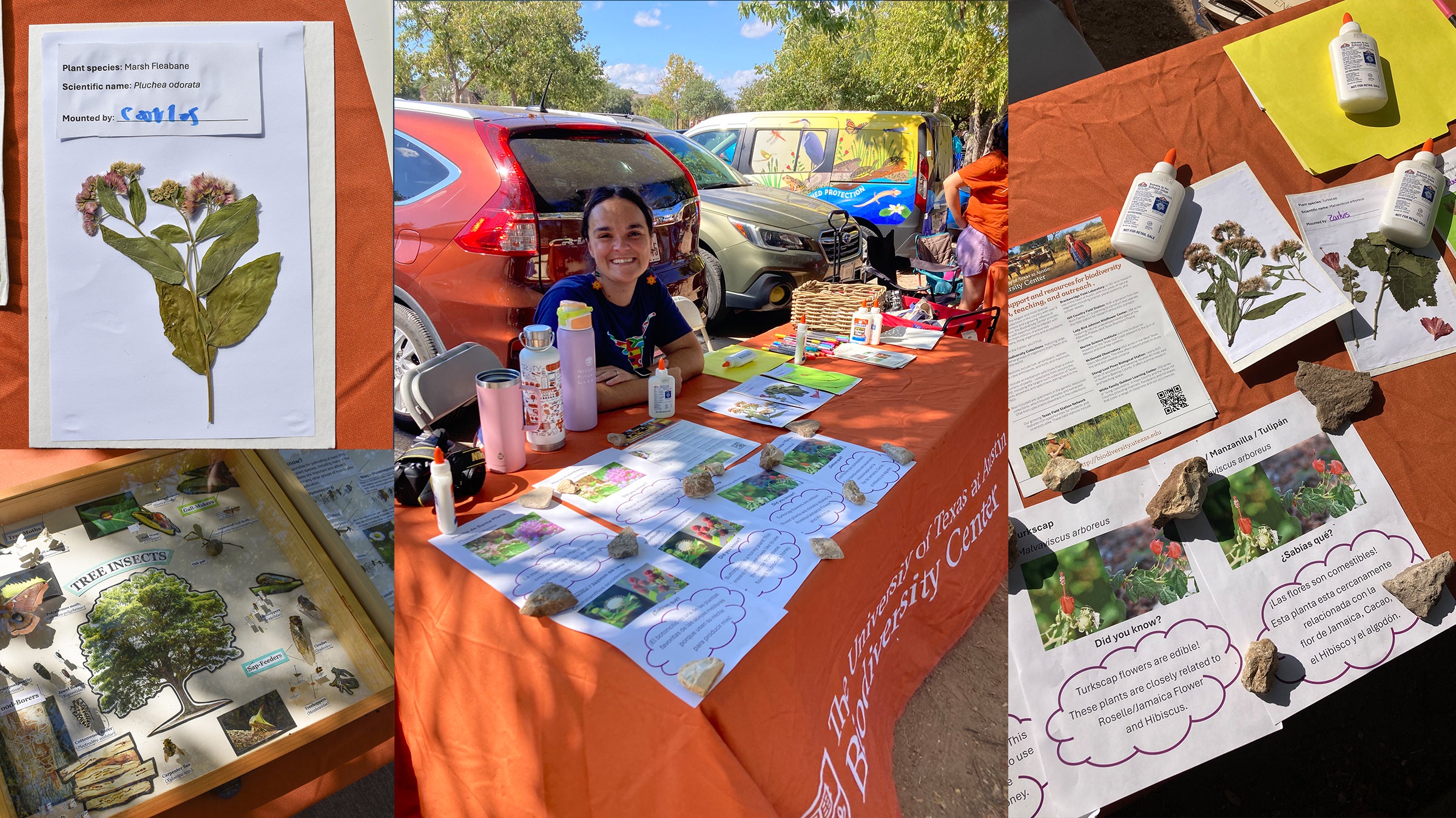Austin’s Other Orange Butterfly: the Gulf Fritillary
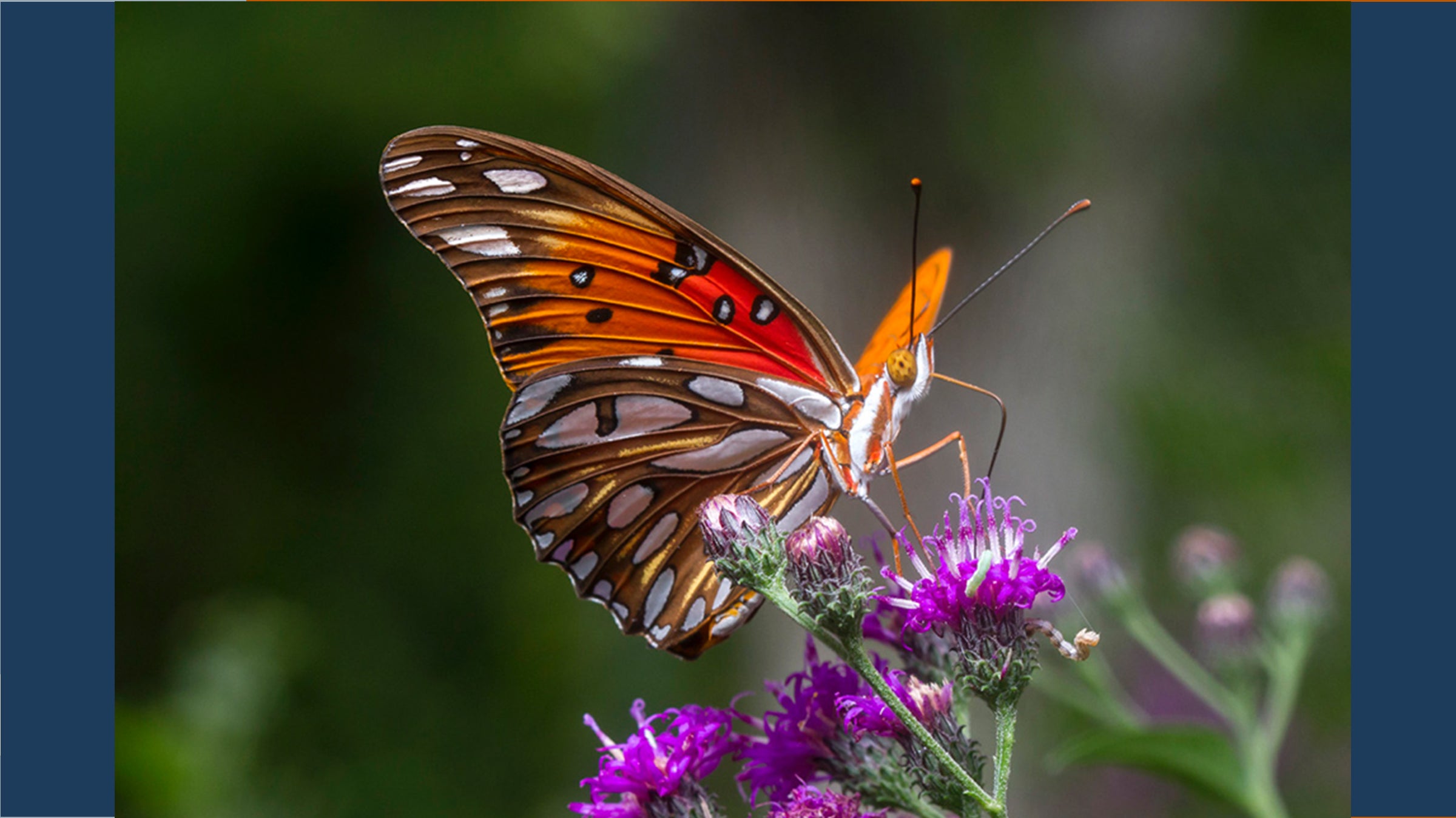
Adult Gulf Fritillary (Photo: Alex Wild)
Austin is a butterfly town. About 150 kinds are known to occur in our area, a mix of temperate and tropical, desert and deciduous forest species. Although many people know the famous monarchs that migrate through in fall, an equally spectacular species is even more common year-round in our city: the gulf fritillary Agraulis vanillae, so-named because early natural history drawings (see below) erroneously depicted the larvae feeding on a vanilla orchid rather than the true host, passion vines (Passiflora). In parts of Texas where this butterfly has a high population, it will choose specific Passiflora species like Passiflora lutea and Passiflora affinis.
Gulf fritillaries are large black-and-orange butterflies with distinct silver markings on the undersides of the wings. The caterpillars have similar coloration, an orange body with rows of long black spines. The species is broadly distributed from South America to the U.S. gulf coast and can be found year-round in the warmer parts of Texas.
Gulf fritillaries are large black-and-orange butterflies with distinct silver markings on the undersides of the wings. The caterpillars have similar coloration, an orange body with rows of long black spines. The species is broadly distributed from South America to the U.S. gulf coast and can be found year-round in the warmer parts of Texas.
The life cycle of this butterfly begins with the egg, laid one-by-one by the female, on or near the host plant. Depending on the temperature, the eggs will hatch in three to five days. A larva (caterpillar) emerges with one goal: eat. They will do this for about 11-16 days, again depending on the temperature. After this time, the caterpillar will start to spin a silk-like substance against something it can cling to. It attaches its rear to this silk lump and hangs upside down. Here, it will make small muscle contractions to shed its skin. It hardens into a chrysalis and will stay in this stage for 11-21 days. Then, the adult will emerge by cracking through the shell and slowly moving downward and out, clinging to the chrysalis shell as support. The newly emerged adult will pump fluid from its abdomen into its wings. The new butterfly lets its wings dry for about ten to fifteen minutes, then takes off in flight. It has a life span of 14 to 27 days.
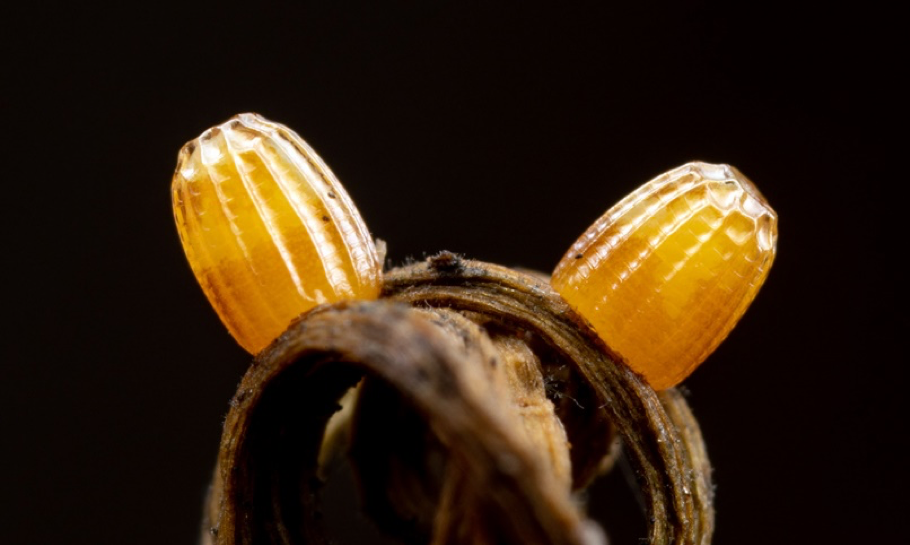
Eggs. (Photo: Alex Wild)
During this short time, adults must locate a mate and the females must lay eggs. Males begin courtship by locating a female and engaging in “wing clap display,” which means what it sounds like: the male continuously opens and closes his wings. The female’s attenae end up between the male’s wings and the male will move into a position that allows them to mate. Males also release pheromones that play roles in the courtship and mating, in addition to the giving of nuptial gifts which are nutritious offerings that may help the female during egg laying. In butterflies, this would be the male's ejaculate which the female absorbs into her body after mating.
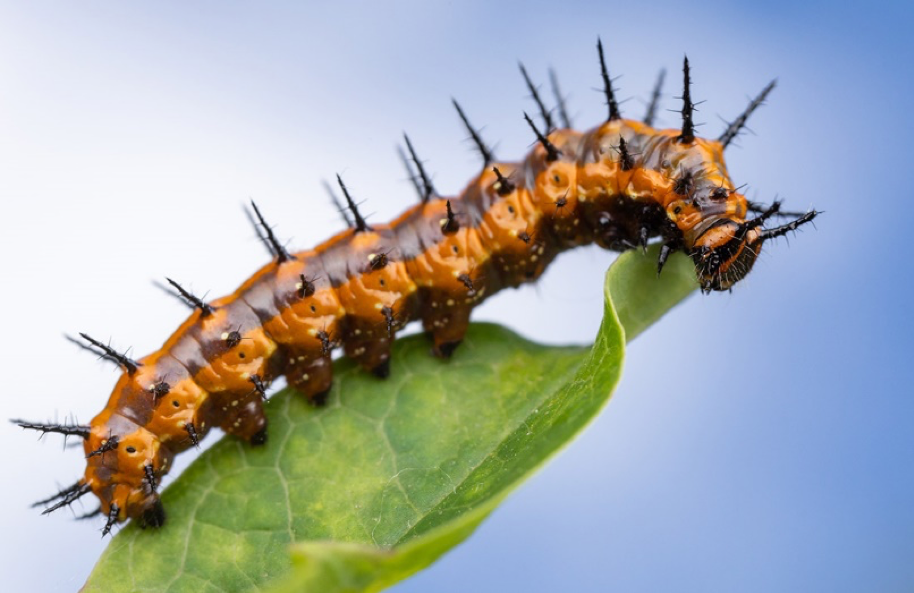
Caterpillar. (Photo: Alex Wild)
It’s not terribly difficult to bring these butterflies into your neck of the woods. Passion flower vines, the larval host plant, grow readily in our area, making it a great choice for butterfly gardens. If you choose to grow passion vines for these butterflies, the caterpillars will eat much of the growth. Rest assured the vine will come back. Additionally, as gulf fritillary caterpillars are straightforward to rear, they also make excellent candidates for school projects. The entire life cycle takes 3-4 weeks. If you are just getting started on learning about our local butterflies, this colorful species should be near the top of your list.

